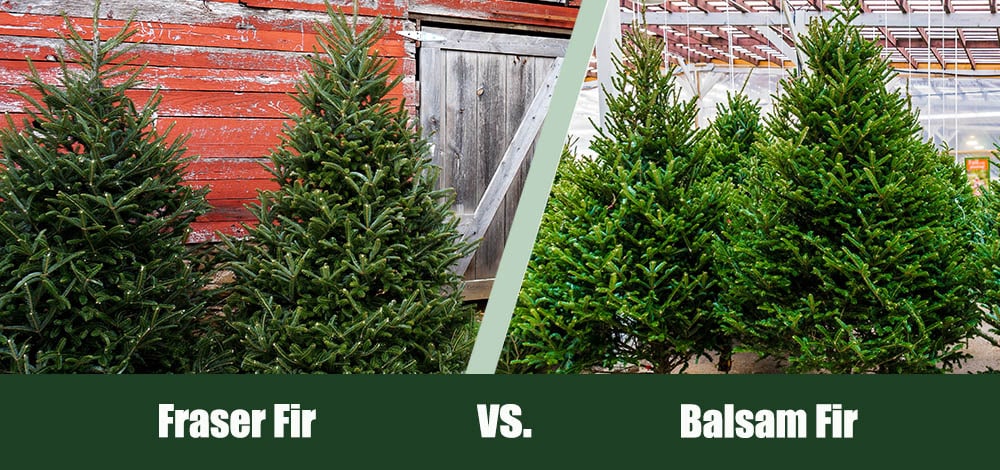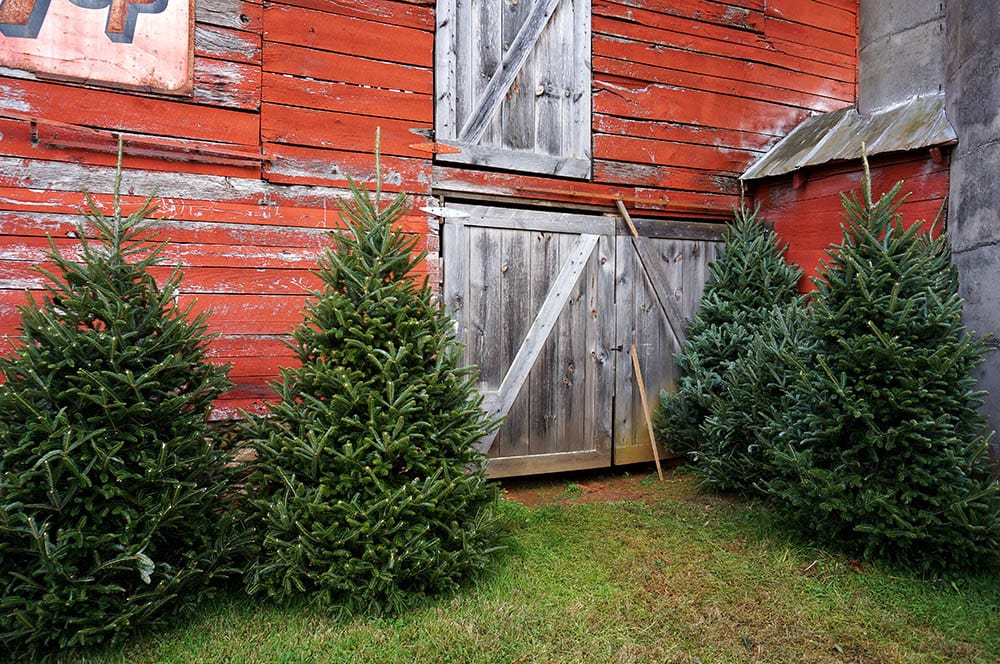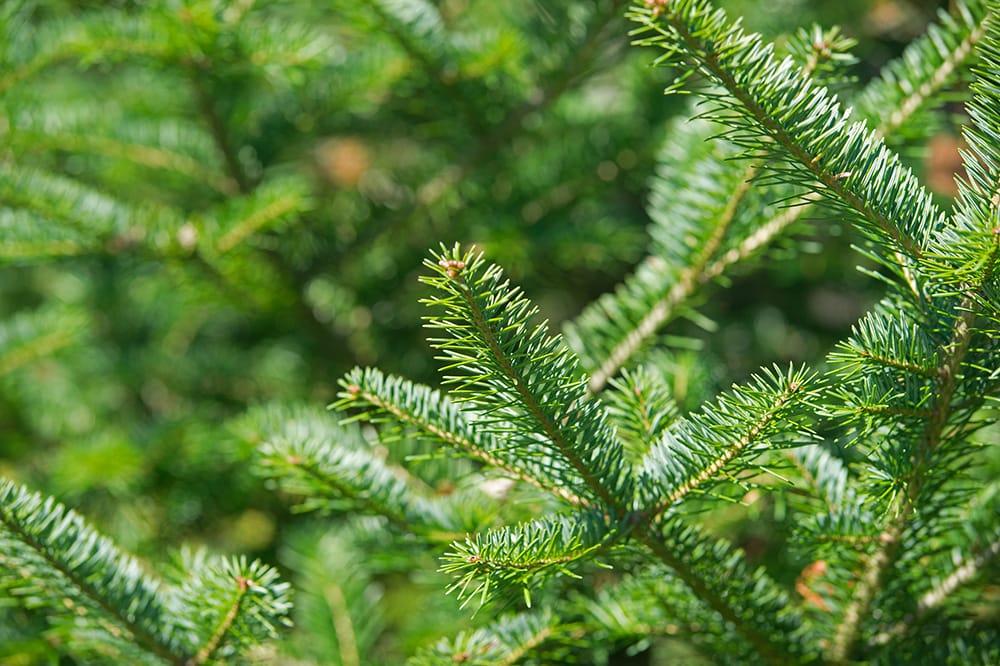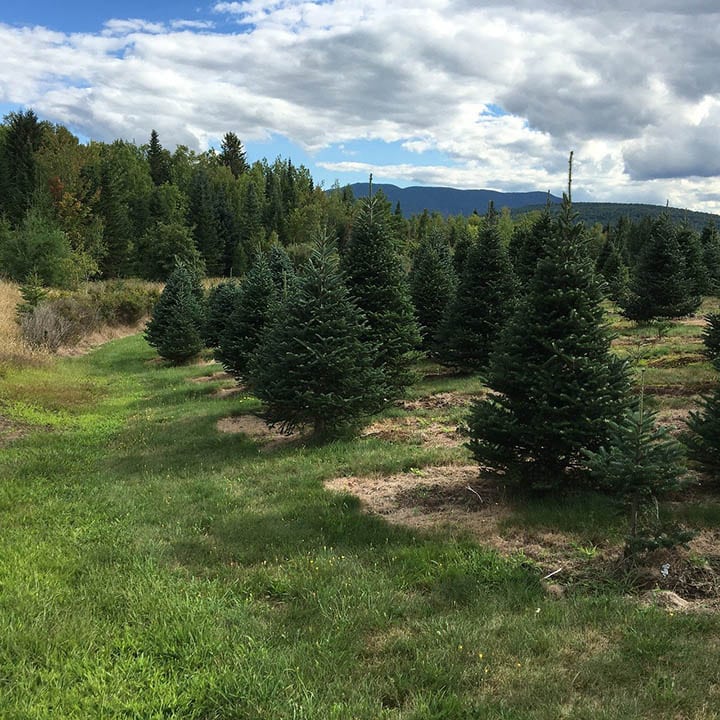Fraser vs. Balsam Fir: What’s the Difference? (With Pictures)
-

- Last updated:

When the holidays arrive, the hunt begins for the family Christmas tree. But while size, shape, and “fullness” might be non-negotiable characteristics for the eventual Yuletide arbor, only a few of us pay attention to the kind of tree we’re bringing into the house.
Several fir tree varieties make suitable Christmas trees, and if you have a selection, being able to discern the differences could help you make the best choice. Two of the most familiar options you can find are Fraser and balsam firs. So, which is the best Christmas tree? We’ll discuss the pros and cons of these two popular evergreens so you can bring home the perfect centerpiece for your holiday decorations.

Overview of Fraser Fir
The Fraser fir is a balsam fir subspecies, often called the Southern balsam. It’s a slow-growing evergreen conifer, taking 7–10 years to reach 7 feet tall, a typical Christmas tree height.
In almost every way, from its stature to its strength, the Fraser fir is a near-perfect Christmas tree. It has exceptional needle retention when it receives adequate water in a tree stand, and when it comes to holding ornaments, there’s nothing better. The sturdy needles provide support, and the rigid, well-spaced limbs let you decorate your tree with even the heaviest, most awkward ornaments.

Where Do Fraser Fir Trees Grow?
Fraser firs grow in cold, wet climates, with much of their moisture drawn from fog, a common phenomenon in the appropriately named Great Smoky Mountains. The ground structure can vary in organic matter, but it typically consists of shallow, rocky soil.
Scottish botanist John Fraser lent his name to the trees he found as he journeyed through the Appalachian Mountains in the late 18th century. The Fraser fir tree only grows naturally in these higher mountain regions of the south, primarily in Virginia, North Carolina, and Tennessee. It can be found as high as the peak of Mt. Mitchell, the highest point east of the Mississippi River, and as low as 4500 feet above sea level.

What Do Fraser Fir Trees Look Like?
Fraser firs take on a natural conical shape, another reason they’re ideal for placement as Christmas trees. They can grow as tall as 80 feet but typically only reach 50–60 feet high. Upturned branches hold firm yet soft needles that are dark green-blue on top and silvery underneath.
Mature cones, which grow to 2–2.5 inches long, offer another identifying characteristic for Fraser firs. Unlike balsam fir cones, Fraser cones develop long, finger-like bracts that extend past the scales.
- Stiff needles stay in place for long periods when well-watered
- Firm branches hold up under heavy weights
- Attractive blue-green and silver coloration to needles
- Relatively slow to grow to full height

Overview of Balsam Fir
Although balsam fir trees only grow about 12 inches each year, they still grow slightly faster than Fraser firs. As a result, the limb structure isn’t as stout, so it can’t hold as much weight as a similar-sized Fraser. Nonetheless, its availability, attractive looks, and pleasing aroma make it one of the most popular Christmas tree varieties throughout the northeast sections of North America.

Where Do Balsam Fir Trees Grow?
Balsam trees cover a vast stretch of North America, growing as far west as Minnesota and Iowa and as far east as Maine. You can find them across Canada as well, ranging from Newfoundland and Labrador to the western breaches of Ontario.
Like its close relative, the Fraser fir, the balsam fir grows best in cool, moist areas. Because it grows in colder hardiness zones 3–5, it doesn’t have to rely on higher altitudes to supply the optimal climate. It’s a resilient tree that can tolerate various soil quality levels and shade, popping up with spruce and pine trees in coniferous forests or alongside deciduous varieties like beech and maple trees in mixed forests.

What Do Balsam Fir Trees Look Like?
Balsam firs grow 45–75 feet tall, sporting a conical shape similar to Fraser fir trees. Shiny, flat needles grow to roughly 1 inch long and have a “green on top, silver on the bottom” coloration akin to their southern counterparts.
Branches tend to be closer together on balsam firs. The needles on balsam firs are longer than Fraser fir needles and lie straight. Although they spiral around the twig, they twist to sit even with the ground. As a result, they look like they sit in two flat rows on either side of the twig. The coloration and texture make balsam fir trees perfect for garlands and wreaths.
- Attractive, lustrous green needles
- Fuller appearance than Fraser firs
- Needles are relatively soft and easy to handle
- Emits a potent, long-lasting aroma
- Needles remain rigid when the tree is well-watered
- Grows faster than Fraser firs
- Limbs are more flexible and weaker than Fraser fir trees
Where Can You Get Fraser Firs?
Balsams firs are the more iconic Christmas trees due to their widespread abundance, but Fraser firs are arguably the superior variety. Fortunately, you don’t have to live in the Appalachians to grow them for yourself. If you live in zones 4–7, you can grow Fraser firs of your own to keep a healthy supply of the perfect Christmas tree at all times.
Conclusion
With their immaculate shapes, upturned and ornament-ready branches, and unmistakable fragrance, fir trees are the ideal type of tree to use for your Christmas celebration. Fraser firs are the cream of the crop by most measures, but their limited range keeps them out of reach for all but a select few. Fortunately, with widespread and hardy varieties like balsam, there are always excellent options ready for the holidays, no matter where you live.
Featured Image Credit: (L) Gingo Scott, Shutterstock | (R) Gus Garcia, Shutterstock
Contents

